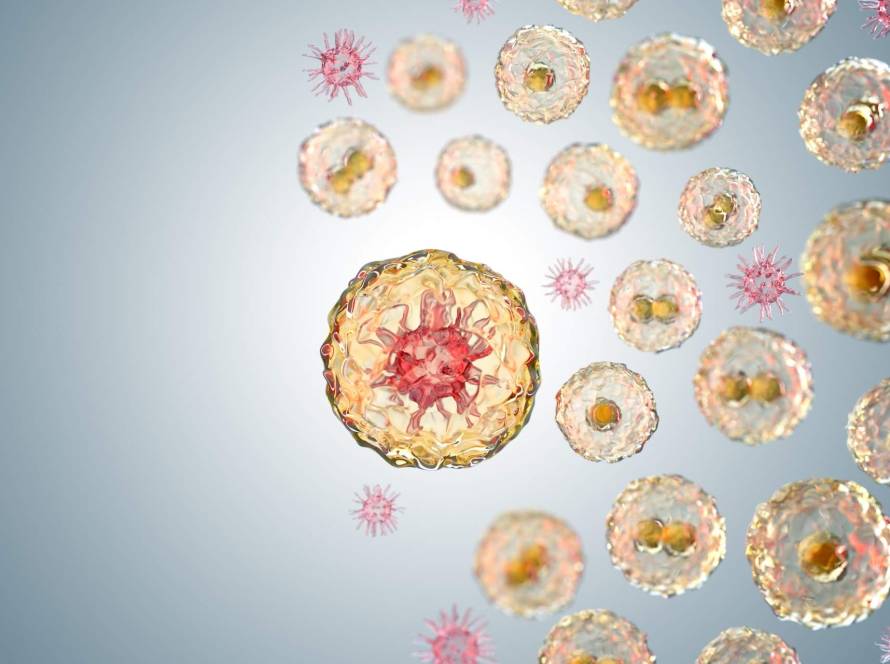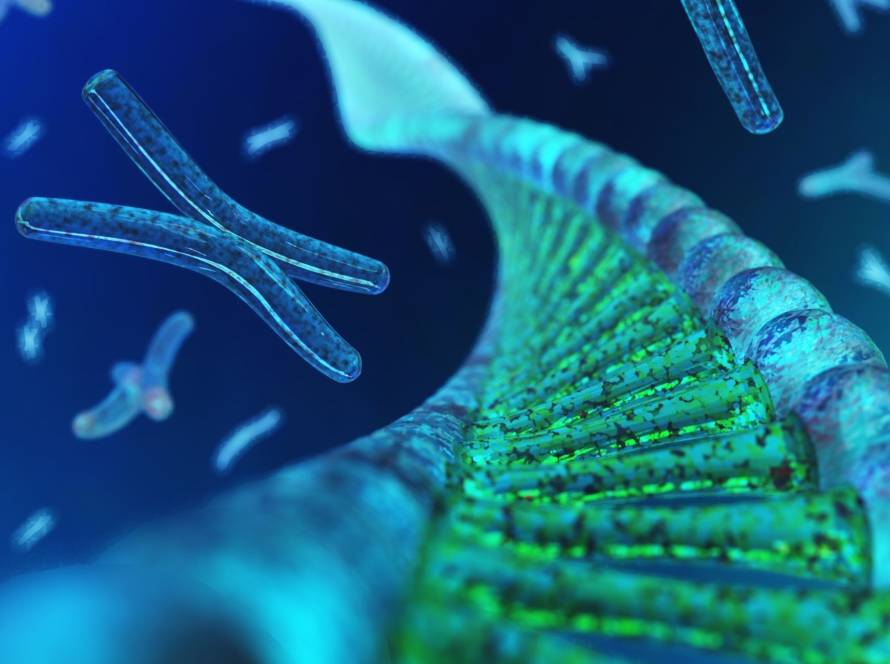Dendritic cells are the master communicators of our body’s defense system. These remarkable immune sentinels start and control our adaptive immune responses. They specialize in capturing, processing and showing fragments of invading pathogens to T and B lymphocytes. This process turns threats into targeted immune action.
This piece breaks down what is the function of dendritic cells and explains their role in preventing autoimmunity by creating regulatory T cells. Learning about dendritic cells helps us understand the immune defense mechanisms that keep us healthy and increase our lifespan.
What role do dendritic cells play?
The main function of dendritic cells is to act as messengers between the innate and adaptive immune systems. They patrol the body’s tissues, capturing and processing foreign substances called antigens, such as viruses or bacteria. Once they collect these antigens, dendritic cells travel to the lymph nodes, where they present them to T cells, activating a targeted immune response. This process helps the body recognize and fight off infections more efficiently.
Dendritic cells also play a role in preventing autoimmune reactions by helping the immune system distinguish between harmful invaders and the body’s own cells.
What are dendritic cells and where are they found?
Dendritic cells (DCs) form a specialized network of immune sentinels that serve as the body’s most powerful antigen-presenting cells. Ralph Steinman and Zanvil Cohn found and named these cells in 1973. They identified these remarkable cells in mouse spleen by their unique star-like shape.
Definition and origin of dendritic cells
Pluripotent hematopoietic stem cells in the bone marrow give rise to dendritic cells through a carefully controlled developmental process. DCs belong to a family of antigen-presenting cells that has B cells and macrophages.
However, DCs activate T cells much more effectively than their counterparts. These cells come from specific DC progenitors and the common DC precursor (CDP) produces both conventional DCs (cDCs) and plasmacytoid DCs (pDCs). This developmental path sets them apart from monocytes and tissue macrophages, which makes dendritic cells a distinct hematopoietic lineage.
Tissue distribution and environmental exposure
Dendritic cells stand guard throughout the body as immune system protectors. They thrive in tissues that connect with the outside world, such as skin, respiratory tract and gastrointestinal mucosa.
Different DC subsets show specific distribution patterns in lymphoid organs. cDC1 cells spread evenly between spleen and lymph nodes, while cDC2 numbers vary across different lymphoid locations. Each tissue type shapes DCs uniquely. Intestinal DCs, to name just one example, make all-trans retinoic acid that improves regulatory T cell generation and programs T cells to target the gut.
Morphology and naming
The Greek word “δένδρον” (dendron), meaning “tree” inspired the name “dendritic” because of their branched extensions. These tree-like projections help DCs sample their environment for antigens effectively. While they look like neuronal dendrites, these structures serve completely different purposes.
Human dendritic cells have an irregular surface with many projections and cytoplasmic vacuoles. Their appearance changes as they mature. Immature DCs, also known as “veiled cells,” have large cytoplasmic veils instead of dendrites and actively perform endocytosis. When they encounter pathogens and mature, they develop their distinctive branching structure. This shape maximizes their surface area to capture and present antigens.
How dendritic cells function in the immune system
Dendritic cells possess a striking appearance and perform complex functions that are the life-blood of immune surveillance and response. These cells coordinate our body’s defense mechanisms through four connected processes.
Antigen capture and processing
Dendritic cells excel at detecting potential threats in their environment through multiple uptake mechanisms. These immature DCs monitor surrounding tissues with pattern recognition receptors (PRRs), particularly Toll-like receptors (TLRs) that detect specific chemical signatures on pathogens.
DCs use endocytosis, macropinocytosis and phagocytosis to internalize antigens when they encounter foreign material. The cells break down these proteins into smaller peptide fragments and attach them to major histocompatibility complex (MHC) molecules for presentation.
Migration to lymph nodes
Dendritic cells undergo an amazing transformation after capturing antigens. They increase CCR7, a chemotactic receptor that guides them through blood or lymphatic vessels to lymph nodes. Chemokines CCL19 and CCL21 from lymphatic endothelial cells direct this migration. The physical constraints DCs face while moving through tissues actually boost their motility. This happens through nuclear envelope stretching and activation of the ARP2/3–cPLA2–NF-κB pathway.
Activation of T and B lymphocytes
Dendritic cells position themselves in T cell zones inside lymph nodes to present antigen-MHC complexes to naïve T cells. They also increase costimulatory molecules that T cells need for activation. DCs influence B cells directly beyond their T cell priming role. They create clusters with B cells through LFA-1-dependent interactions. These cells can stimulate B cells to grow and produce antibodies, especially when their CD40 receptors become active.
Role in bridging innate and adaptive immunity
Dendritic cells act as vital messengers between our innate and adaptive immune systems. They detect pathogens through innate receptors and activate adaptive immune cells, which makes them essential conductors of complete immune responses.
Types of dendritic cells and their specialized roles
The dendritic cell family includes distinct subsets that coordinate immune responses through specialized functions. Each subset has unique developmental pathways, surface markers and capabilities that help them perform specific roles in the immune system.
Conventional dendritic cells (cDC1 and cDC2)
Conventional dendritic cells have two major subsets with distinct specializations. Human cDC1s can be identified by CD141 (BDCA3). These cells are skilled at cross-presenting exogenous antigens to CD8+ T cells, which makes them vital for anti-tumor and anti-viral immunity. Their development relies on transcription factors BATF3 and IRF8.
The cDC2s display SIRPα (CD172a) and CD11b in mice, while their human counterparts show CD1c (BDCA1) expression. Unlike cDC1s, cDC2s are more heterogeneous and we activated CD4+ T cells. These cells that can trigger Th1, Th2 and Th17 responses based on context. The cDC2′ developmental program isn’t fully understood yet, though IRF4, Notch2, RelB and KLF4 help form them.
Plasmacytoid dendritic cells (pDCs)
Plasmacytoid dendritic cells are a unique DC subset that specializes in rapid antiviral defense. These cells make up just 0.1-0.5% of peripheral blood mononuclear cells but produce large amounts of type I interferons during viral infections. Human pDCs’ identity comes from their CD303 (BDCA2), CD304 (BDCA4) and ILT7 expression, while lacking CD3, CD19, CD14, CD16 and CD11c lineage markers.
These cells differ from conventional DCs with their plasma cell-like appearance until activation. Their strong antiviral ability comes from high endosomal TLR7 and TLR9 expression, which detect viral RNA and DNA. TCF4 (E2-2) acts as the main regulator in pDC development.
Monocyte-derived dendritic cells
Monocyte-derived dendritic cells (Mo-DCs) come from circulating monocytes under inflammatory conditions. These cells appear only during inflammation or infection, becoming the most common DC population in affected areas.
Mo-DCs work alongside conventional DCs, especially when dealing with inflammatory responses. They help with innate defense and T cell activation. Studies show that NADPH oxidases, especially NOX5, significantly regulate Mo-DC development. These cells also show different differentiation patterns in autoimmune conditions like rheumatoid arthritis.
Langerhans cells and tissue-specific subsets
Langerhans cells are specialized DCs found in the epidermis and mucosal epithelia. They have unique features including Birbeck granules, rod or tennis racket-shaped organelles, and langerin/CD207 expression. These cells share characteristics with both dendritic cells and macrophages in their transcriptome.
Langerhans cells develop differently from conventional DCs. They need M-CSF and IL-34 instead of Flt3L. The cells can self-renew and live long within the epidermis. When activated, they move to lymph nodes and start showing more conventional DC-like transcriptional patterns.
Dendritic cells in health, disease and therapy
Dendritic cells orchestrate immune responses in many disease contexts. These cells indicate pathology and serve as potential therapeutic targets. Their ability to sense, process and present antigens makes them crucial for health and disease.
DCs in viral and bacterial infections
Dendritic cells guard against pathogens as first-line sentinels. Plasmacytoid DCs (pDCs) produce large amounts of type I interferons during viral infections. COVID-19 patients show this interferon response affects viral susceptibility. Research shows patients with higher levels of type I IFN neutralizing auto-antibodies face greater risk of severe pneumonia. The aging process reduces and delays type I IFN production because of impaired receptor signaling and fewer circulating pDCs.
Studies show that conventional DCs in aged mice show poor migration to draining lymph nodes. This leads to weaker T cell responses. Viral infections can trigger senescence, known as virus-induced senescence (VIS). This process looks and behaves much like other types of cellular senescence.
DCs in cancer immunotherapy
Cancer immunotherapy employs DCs’ antigen-presenting abilities through various methods. Clinical trials show promise for DC vaccines loaded with tumor antigens, RNA-encoding tumor antigens, or tumor lysates. Sipuleucel-T, a DC-based therapy for prostate cancer, helped patients live longer compared to placebo (25.8 vs. 21.7 months), according to studies.
The medical field has not widely adopted these treatments due to their complexity and cost. Yet combination strategies that pair DC vaccines with checkpoint inhibitors work well, particularly in “cold tumors” where lymphocyte infiltration remains low.
DCs in autoimmune diseases
DCs behave and distribute differently in autoimmune conditions. Rheumatoid arthritis patients have more myeloid DCs in their peripheral blood, synovial fluids and tissues. These DCs show an activated state with high HLA-DR and co-stimulatory molecule expression. Multiple sclerosis patients show similar patterns. Their myDCs in the CNS help reactivate T cell responses to myelin.
Systemic lupus erythematosus occurs when macrophages fail to clear apoptotic cells properly. This failure leads to overactive DCs. Problems with tolerogenic DC functions contribute to autoimmunity development.
Emerging role in aging and immunosenescence
Aging changes DC function substantially and leads to immunosenescence, the slow decline in immune capabilities. The immune system weakens with age but paradoxically causes low-grade chronic inflammation and increased pro-inflammatory mediators.
Research reveals aged DCs struggle with phagocytosis and migration. These cells also produce different amounts of cytokines. MODCs from older subjects make more pro-inflammatory cytokines IL-6 and TNF-α but not more anti-inflammatory IL-10. This imbalance likely causes the chronic inflammation seen in aging.
Dendritic cells stand out as one of the immune system’s most remarkable components. They act as vital bridges between innate and adaptive immunity. Dendritic cell dysfunction plays a crucial role in many conditions, including viral infections, cancer and autoimmune diseases. Their altered function during aging contributes substantially to immunosenescence. This age related decline in immune competence makes people more vulnerable to infections and cancer while maintaining low-grade inflammation.
Research on dendritic cells shows promise for therapeutic applications, especially in cancer immunotherapy where DC-based approaches benefit patients clinically. Their fundamental role in immune defense puts them at the forefront of efforts to improve longevity and healthspan.


